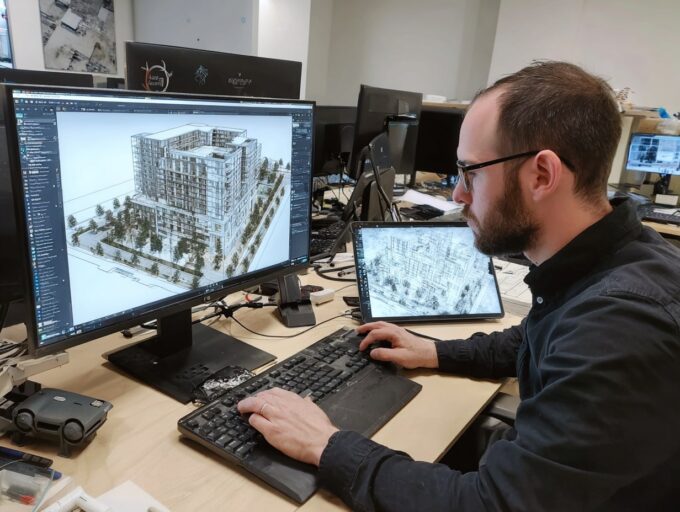- Home
- Articles
- Architectural Portfolio
- Architectral Presentation
- Inspirational Stories
- Architecture News
- Visualization
- BIM Industry
- Facade Design
- Parametric Design
- Career
- Landscape Architecture
- Construction
- Artificial Intelligence
- Sketching
- Design Softwares
- Diagrams
- Writing
- Architectural Tips
- Sustainability
- Courses
- Concept
- Technology
- History & Heritage
- Future of Architecture
- Guides & How-To
- Art & Culture
- Projects
- Interior Design
- Competitions
- Jobs
- Store
- Tools
- More
- Home
- Articles
- Architectural Portfolio
- Architectral Presentation
- Inspirational Stories
- Architecture News
- Visualization
- BIM Industry
- Facade Design
- Parametric Design
- Career
- Landscape Architecture
- Construction
- Artificial Intelligence
- Sketching
- Design Softwares
- Diagrams
- Writing
- Architectural Tips
- Sustainability
- Courses
- Concept
- Technology
- History & Heritage
- Future of Architecture
- Guides & How-To
- Art & Culture
- Projects
- Interior Design
- Competitions
- Jobs
- Store
- Tools
- More
Five Things for Students to Know Before Becoming an Architect

Those who aspire to become architects in this world need unique skills. They use their abilities to apply their ideas around planning and designing structures. Thus, they play a significant role with their expertise in science and art. They must understand what it takes to become successful. This enables them to unlock their aspirations.
There are many options when looking towards such a field. A student can choose to become one of many types of designers. Hence, individuals at the beginning of their journey should consider their future. Having a general idea allows you to relish the works of the field. This article revolves around the five things a future architectural student should know.

Table of Contents
ToggleArchitects’ Student Life
Like most who plan on pursuing a professional career, the first goal is obtaining a license. It allows one to work on projects and construction. Developing relevant skills and understanding disciplines is essential for their degree. Many applicants check over 100 personal experience essays for help. That happens while applying to universities. The college wants you to elaborate on your personal experience. Prospective architects should be able to express themselves in a specific manner. That allows them to show admission offers that interest them. It also portrays personal curiosity.
Yet, the beginning of a designer’s tribulations begins early. It happens after they find themselves in university for their degree. As a result, prospective students need to consider what their education entails.
Things to Consider for Prospective Architects
Many interested in such a career path have a surface-level understanding. Yet, it is crucial to distinguish significant areas of concern. It allows prospective individuals to prepare for their careers.
Prevalence of Different Architectural Licenses
As of 2020, there were 121,000 official architects across the US. The country saw an increase of 5 percent from the previous year. There are various available boards. One is The National Council of Architectural Registration Boards (NCARB). They are responsible for providing many licenses in the US. Other options exist for people pursuing this career path in other parts of the world.
The Different Types of Architects
Most people specialize in a particular subject within this field. Hence, students choose an area they want to focus on in a professional context. Design ones are responsible for the conception of a structure’s design. They must understand a client’s requirements. A professional considers the project’s essential parameters to produce a design.
Technical architects are more involved in the precise details of structure schematics. Project managers learn more about staffing, devising timelines, collaboration, and stakeholders’ communication. Interior designers take care of the internal designs. They ensure plans align with occupant comfort. Landscape graduates focus more on outdoor spaces.
Implementation of an Architects involvement in Designing Buildings
The process for construction has four relevant areas. A schematic design allows designers to analyze their client’s needs. It enables them to assess relevant extraneous factors before developing a plan. Then the next phase involves design development. Clients build upon an approved design, and people coordinate with other team members. Together, they begin the construction of a building.
Afterward, members produce construction documents and consent to them. People often notarize and approve documents. This is an essential step in the construction process. Thus, relevant contractors and other parties receive appropriate instruction. Also, construction administration forms the implementation of the construction project itself. One can shift their focus according to the project’s needs. Some shift into advising. In other cases, they could become supervisors according to changing conditions.
Different Skills to Develop for Architects
Some essential skills are not as prominent when looking at the profession from afar. Those include communication skills, business literacy, and financial literacy. One also must focus on new technologies and health and safety regulations. All these ideas ensure that the structures produced conform to modern standards. It enables projects to incorporate aspects of sustainability, efficiency, and safety. Hence, many new-age architects learn new technologies, managerial practices, and other relevant concepts.
Importance of Technical Literacy
The modern engineer needs to comprehend current standards on technical drawings. The person must also know the appropriate software renders. New-era technology allows this field to progress past its previous limitations. People adapt to regular software updates. The best software includes Rhino, AutoCAD, and Grasshopper. It would be best if you aimed to develop skills through hands-on experience. Reading books is not going to assist you in this profession.
Final Thoughts
All-in-all, there is much to consider for aspiring architects pursuing the field. Still, the main area to consider is how a prospective architect can thrive. This often occurs during the learning process for such a career track. Students need to find out how their path might unravel. The simplest means to doing so is through following modifications and novel technologies. Remember, there are various elements to consider. The first personal essay you write might sound straightforward. Yet, the department in college might seem intimidating. Later, you will get a license, but your journey will include memorable moments. Finally, strive for your goal, and align your studies to match your dreams.
Author’s Bio
Robert Griffin
Robert Griffin empathizes with new students who find themselves confused. He has experience teaching future professionals. Robert focuses on all the intricacies involved in their journey to a license. After conversing with alums, he started sharing advice as a freelance writer.
illustrarch is your daily dose of architecture. Leading community designed for all lovers of illustration and #drawing.
Submit your architectural projects
Follow these steps for submission your project. Submission FormLatest Posts
Preventing Cyber Threats in Smart Buildings by Design
The trend of integrating IoT technologies into buildings isn’t going away. More...
Procreate vs Photoshop: Should Architects and Designers Use Them for Architecture Work?
Procreate vs Photoshop for architects: see when to sketch on iPad and...
A Beginner’s Guide to Using Heat Pumps
Understanding home heating and cooling can be confusing, especially if you’re starting...
HEALING GARDENS – Designing Spaces for Wellness and Reflection
This competition challenges architects and landscape designers to envision gardens as therapeutic...












Leave a comment